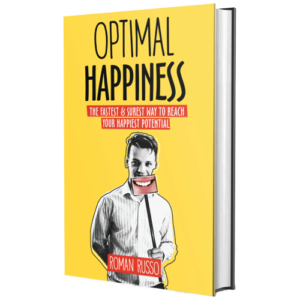Stay Happy & in Touch
Join other happiness enthusiasts and receive the latest happiness tips, tricks, and news on your favorite social media channels or via your email. We never send spam!

EVERYDAY HAPPINESS
EXPAND EXPERTISE
EVIDENCED BY RESEARCH
ARTICLES
Roman Russo is Founder, Happiness Coach, and the Chief Happiness Executive is at Optimal Happiness. He is the author of the book: Optimal Happiness: The Fastest & Surest Way to Reach Your Happiest Potential. Today, he provides courses, speaking events, and personal coaching, working on new material for schools, parents, corporations, and government institutions, all aimed at improving the state of well-being across the world.

Reach your happiest potential today using our world-class A to Z Optimal Happiness courses.

Transform your life for the happier. Book FREE 1-on-1 30m introduction call.

Master the skill of happiness using our best-selling book — Optimal Happiness.

Book Roman Russo for your inspirational and transformational event.

Boost corporate performance and revenue by nurturing the well-being of your employees.

Join our community of like-minded happiness enthusiasts and advocates.
Join other happiness enthusiasts and receive the latest happiness tips, tricks, and news on your favorite social media channels or via your email. We never send spam!
Copyright © 2024 Optimal Happiness | Disclaimer | Terms and Conditions | Privacy Policy